Pushing the Boundaries: Succulents’ Mind-Blowing Cold Resilience
When you think of succulents, heat and drought likely come to mind. After all, these water-storing plants have evolved to thrive in hot, arid environments. But get ready to have your mind blown – many succulent varieties are true cold warriors as well! From frosty nights to blizzard conditions, these hardy little plants can shrug off freezing temps like it’s no big deal. Let’s dive into the icy resilience of succulents.
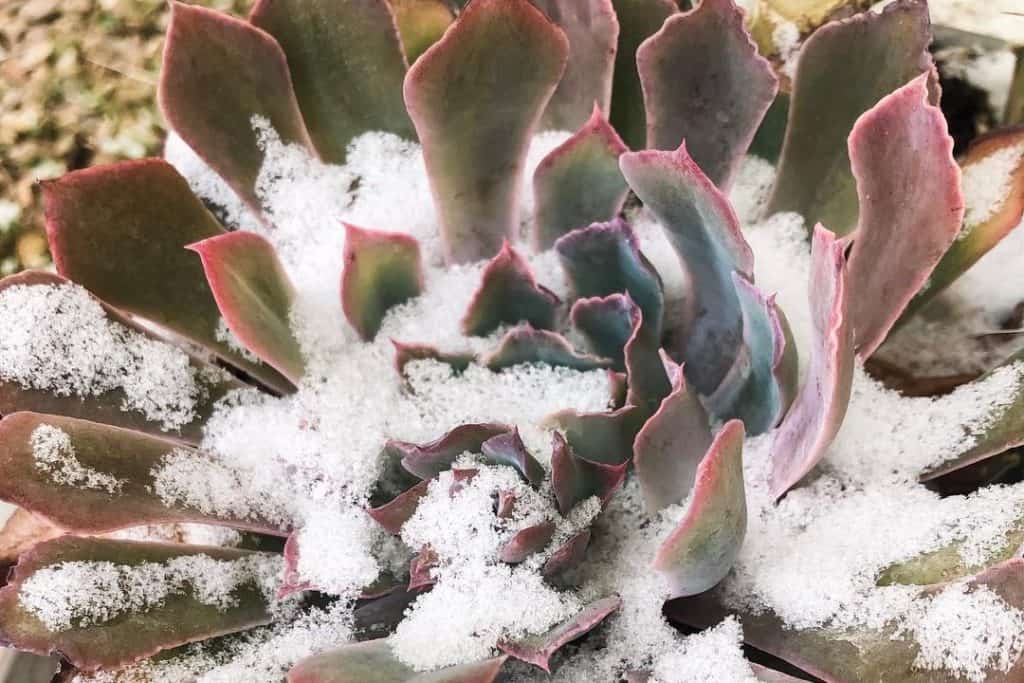
Contents
The Amazing Adaptations of Cold-Hardy Succulents
Succulents’ natural defenses against dehydration make them surprisingly equipped to battle the cold. As temperatures drop, their metabolic processes convert remaining water into sugar. With little to no remaining moisture, there’s minimal risk of bursting plant cells from frozen H2O. It’s a clever trick that allows species like the iconic cactus to thrive in freezing deserts and high alpine zones.
But that’s just the start of these plants’ icy evolutionary genius! Cold-hardy succulents are like plant versions of anti-freeze – their sugary sap resists crystallization so cells stay intact when frozen. How wild is that? Some species go full “Freezerbot” mode, pulling moisture from their outer leaves to protect their core.
And get this – Opuntias like the cold-loving Fragile Prickly Pear can survive incredible cold of -40°C (-40°F) thanks to special proteins that help them bounce back after a deep chill. These little survival superpowers are just plain amazing!
Some succulents can even survive a freeze as low as -30°C (-22°F)! The keys are providing perfect drainage to avoid soggy soil and shielding them from wind and moisture. With those safeguards in place, these evolutionary overachievers laugh in the face of frost and ice.
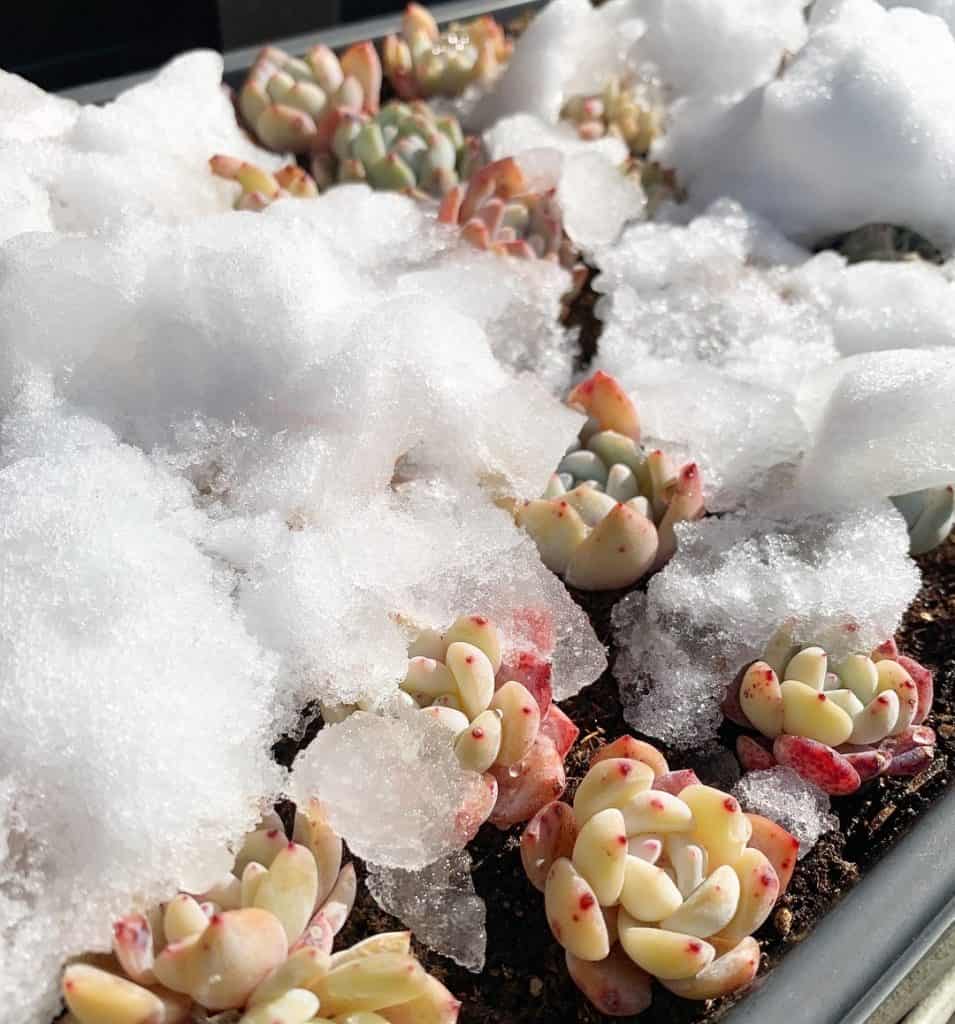
The Coolest Cold-Conquering Succulent Genera
When you think of cold-hardy succulents, Ice Plants, Stonecrops, Hens and Chicks, and Prickly Pears probably come to mind first. But hold onto your mittens – there’s a whole world of surprising succulent genera ready to shatter your icy expectations!
Agave
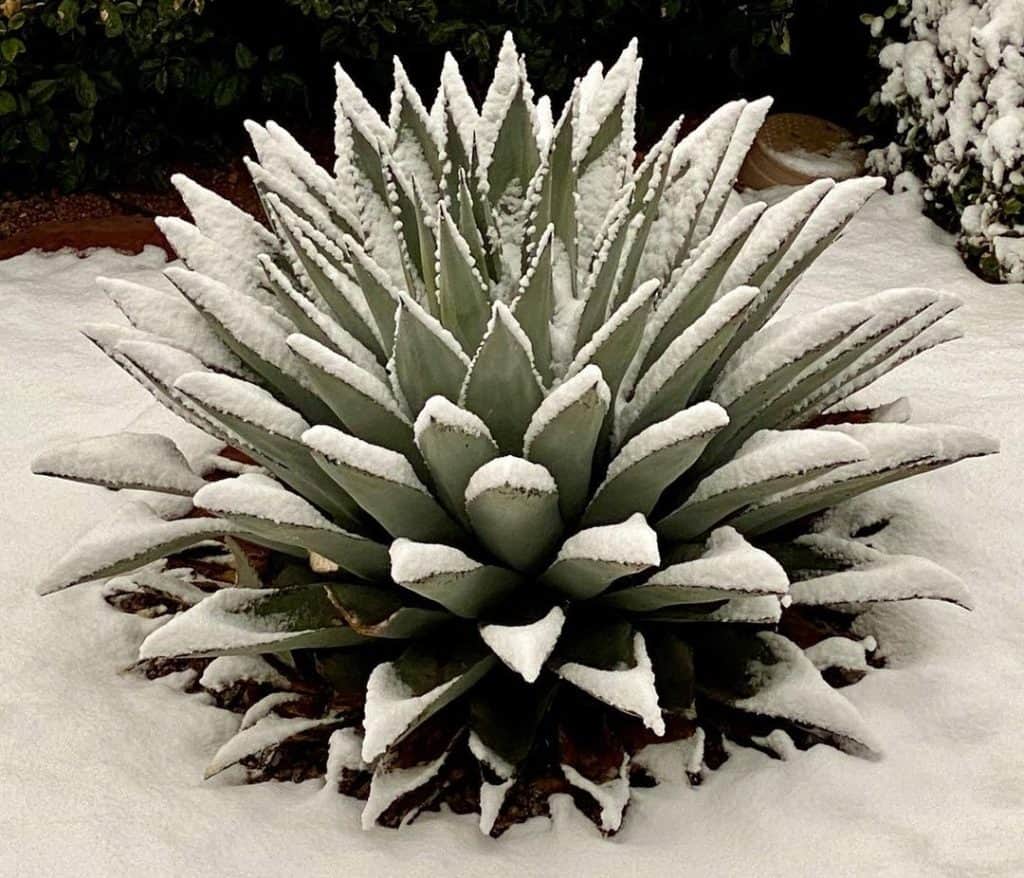
Don’t think these desert dwellers can’t take a freeze. Many Agave species from high elevations are cold-hardy champs, like Agave parryi down to -23°C (-10°F).
Aeonium
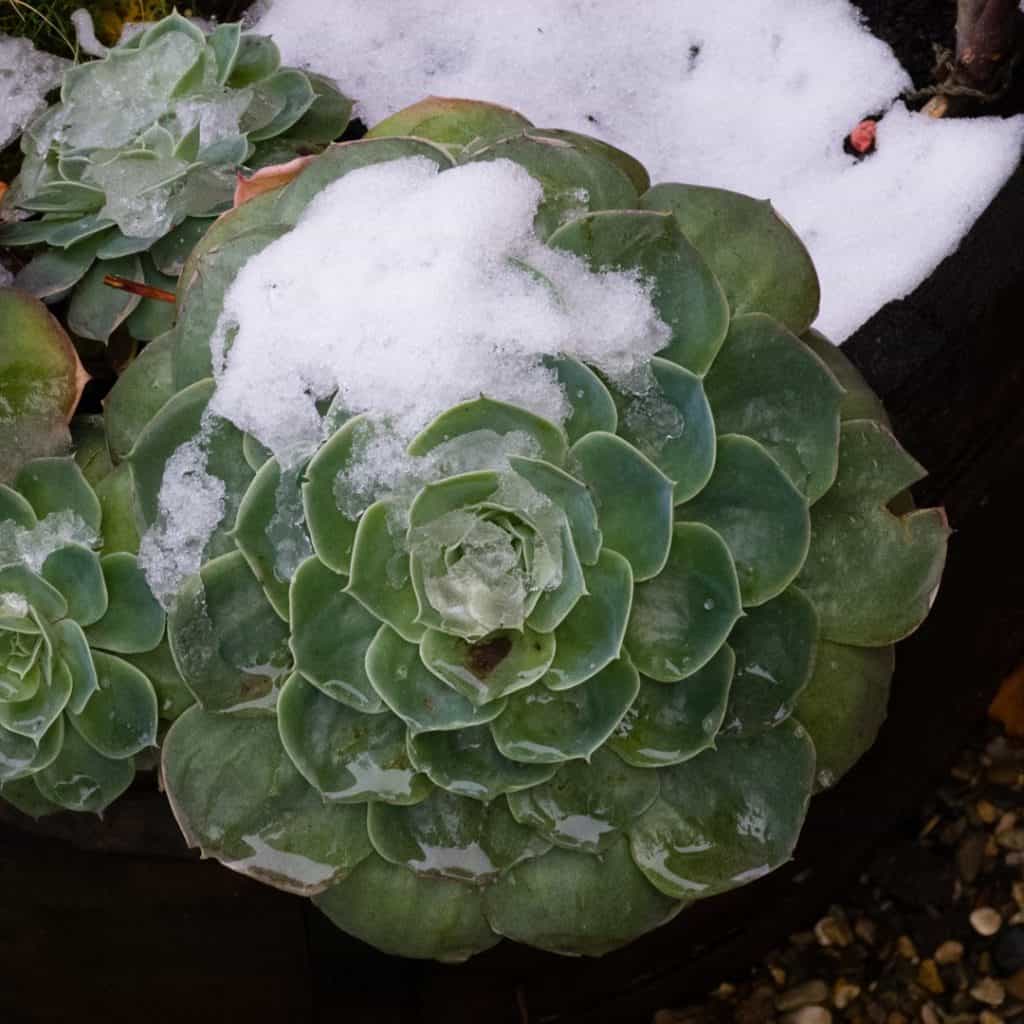
While many aeoniums go winter-dormant, varieties like the Black Rose (A. arboreum) keep their cool shape at temperatures around -12°C (10°F).
Aloe
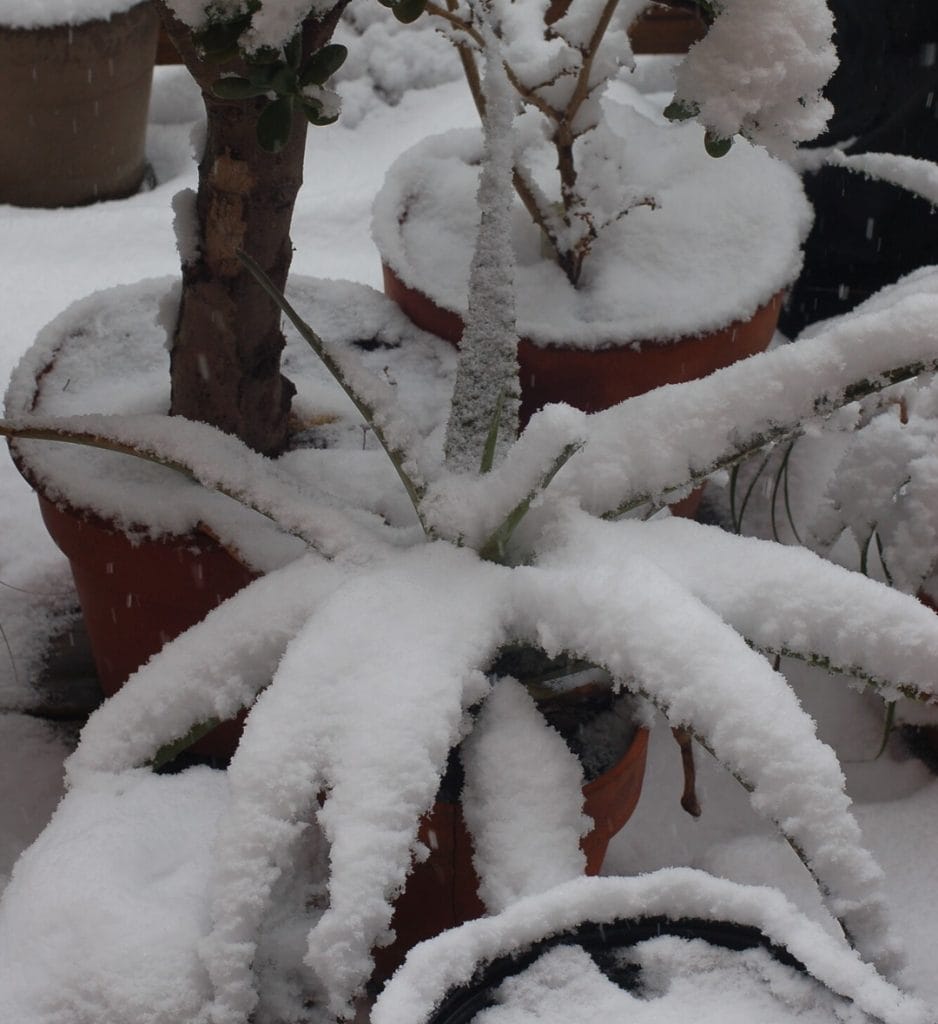
Hot and cold? You bet! Aloes like A. castanea, A. camperi, and hybrids with winter-hardy genes can handle light freezes below -5°C (23°F).
Echeveria
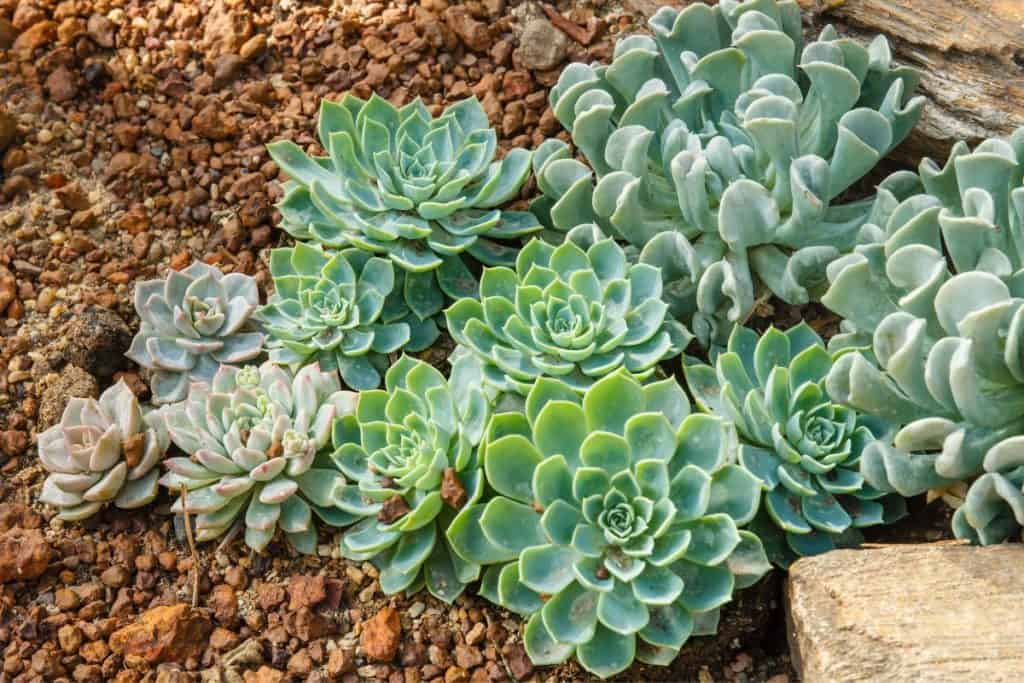
The classic hens and chicks get chilly too, with varieties like Echeveria pulvinata shrugging off down to -15°C (5°F) when dry.
Euphorbia
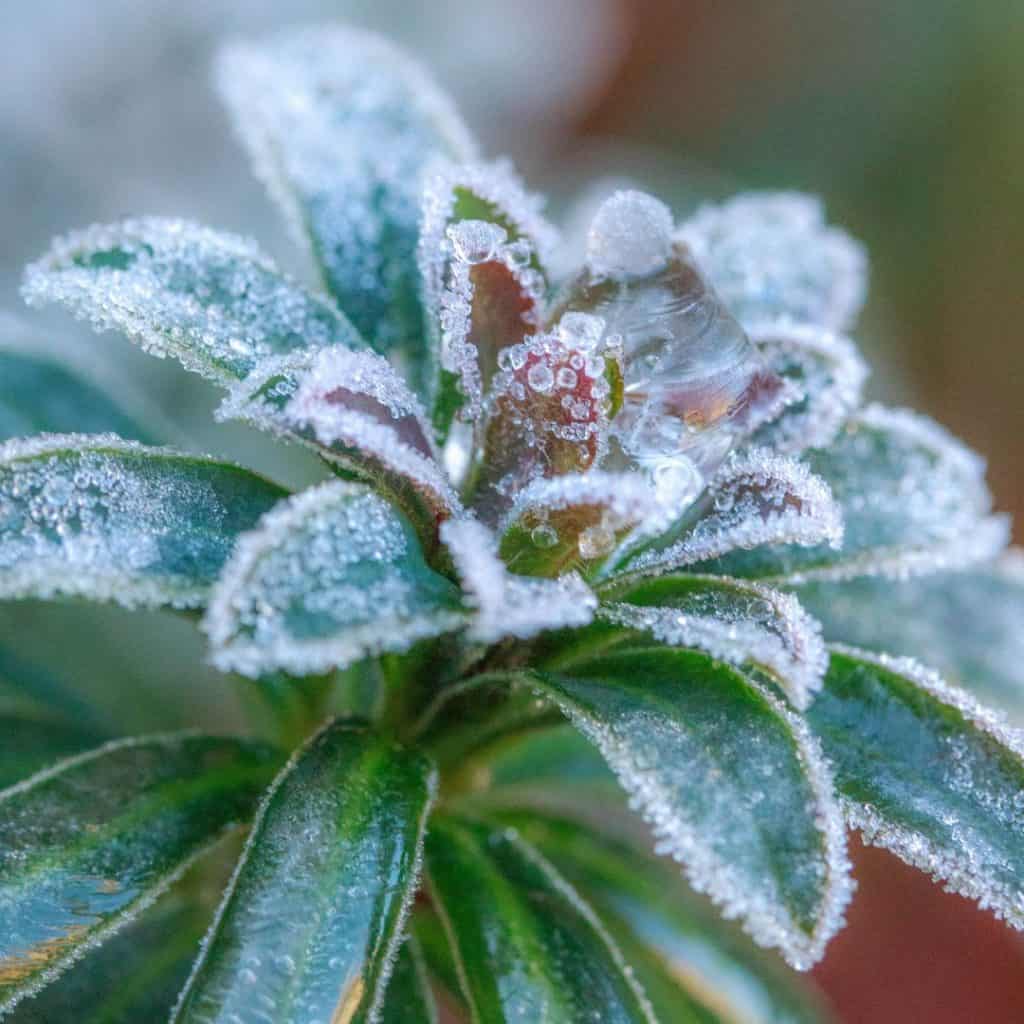
Euphorbias run the climate gamut from deserts to frozen poles. E. rigida and other cold-defying species take -23°C (-10°F) easily.
Gasteria and Haworthia
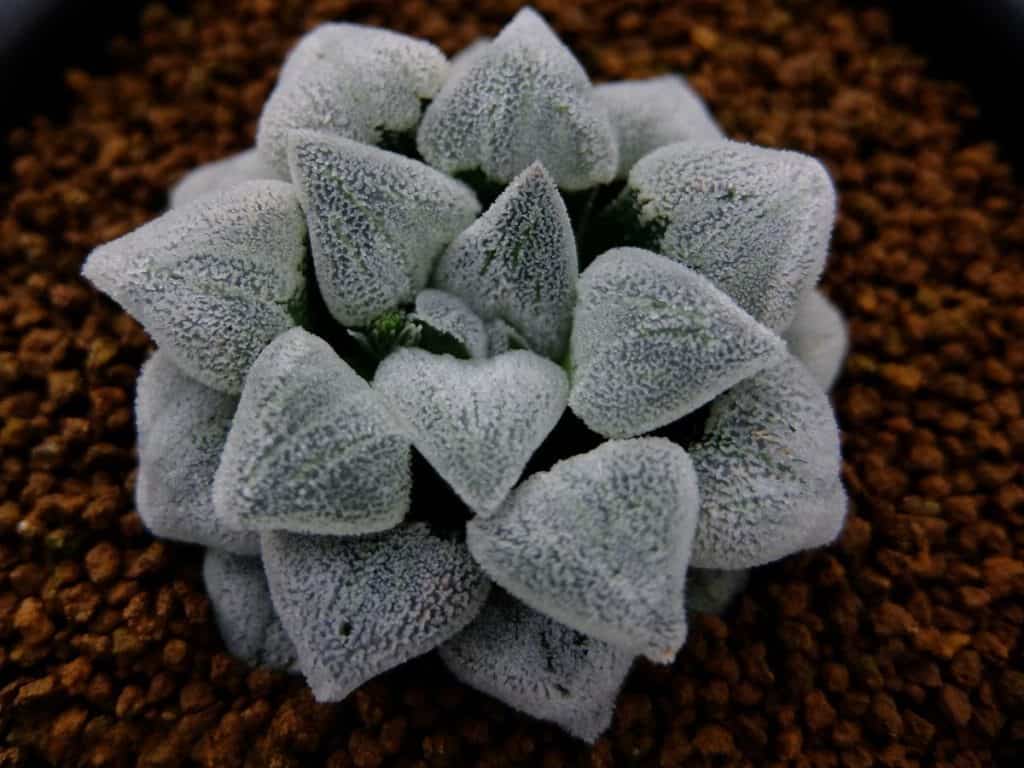
These zebra-striped cuties originate in cool, high-elevation areas of South Africa. Many varieties like G. brachyphylla sail through zone 5 winters.
So whether it’s agaves, aeoniums, aloes, echeverias, euphorbias, gasterias or haworthias, the cold-hardy succulent crew reaches far beyond the usual suspects. Who knew these drought-busters could also fight off frost and ice? Just another amazing evolutionary trick from these resilient little champs.
Tips for Overwintering Hardy Succulents
You know those hardy succs can take the cold, but a little extra TLC goes a long way for surviving winter unscathed. Give them a sweet, wind-protected spot with a southern exposure to soak up those rays. And drainage, drainage, drainage – wet feet are an icy death sentence. Plant in a gravelly mix or add a layer on top to wick away moisture. Oh, and don’t forget that sun shielding material or cold frame once the freezes hit – a little protection goes a long way.
Best Planting Locations and Potting Mixes
Rocky, aerated soil with just the right amount of grit – that’s prime succulent real estate when cold is in the forecast. A sloped, south-facing area creates the perfect warm-ish microclimate. If potting up some chillers, you want a fast-draining cactus/succulent mix cut with around 30% perlite or pumice. Top dress with gravel or chicken grit too for a moisture-slurping finish. With the right spot and soil, your succulents will be riding out the frost in luxury.
Signs of Cold Damage and Reviving Plants
A few telltale signs of cold stress include shriveled, mushy, or discolored leaves and stems. If you notice any damage after a deep freeze, don’t panic – remove any dead material but leave the healthy parts intact. Find a sheltered spot out of freezing temps and adjust your watering back down to a trickle. With any luck, your hardy succulent buddies will rally back in spring’s warmth. If not, well, you gave it your best cold-defying effort!
